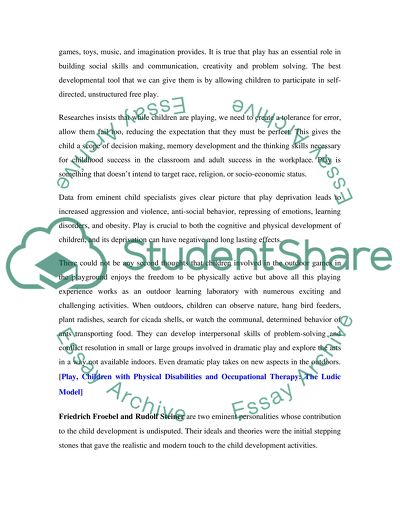Cite this document
(“Well-planned play, both indoors and outdoors, is a key way in which Essay”, n.d.)
Retrieved from https://studentshare.org/miscellaneous/1537000-well-planned-play-both-indoors-and-outdoors-is-a-key-way-in-which-young-children-learn-with-enjoyment-and-challenge-qca-2000-critically-evaluate-the-wor
Retrieved from https://studentshare.org/miscellaneous/1537000-well-planned-play-both-indoors-and-outdoors-is-a-key-way-in-which-young-children-learn-with-enjoyment-and-challenge-qca-2000-critically-evaluate-the-wor
(Well-Planned Play, Both Indoors and Outdoors, Is a Key Way in Which Essay)
https://studentshare.org/miscellaneous/1537000-well-planned-play-both-indoors-and-outdoors-is-a-key-way-in-which-young-children-learn-with-enjoyment-and-challenge-qca-2000-critically-evaluate-the-wor.
https://studentshare.org/miscellaneous/1537000-well-planned-play-both-indoors-and-outdoors-is-a-key-way-in-which-young-children-learn-with-enjoyment-and-challenge-qca-2000-critically-evaluate-the-wor.
“Well-Planned Play, Both Indoors and Outdoors, Is a Key Way in Which Essay”, n.d. https://studentshare.org/miscellaneous/1537000-well-planned-play-both-indoors-and-outdoors-is-a-key-way-in-which-young-children-learn-with-enjoyment-and-challenge-qca-2000-critically-evaluate-the-wor.


